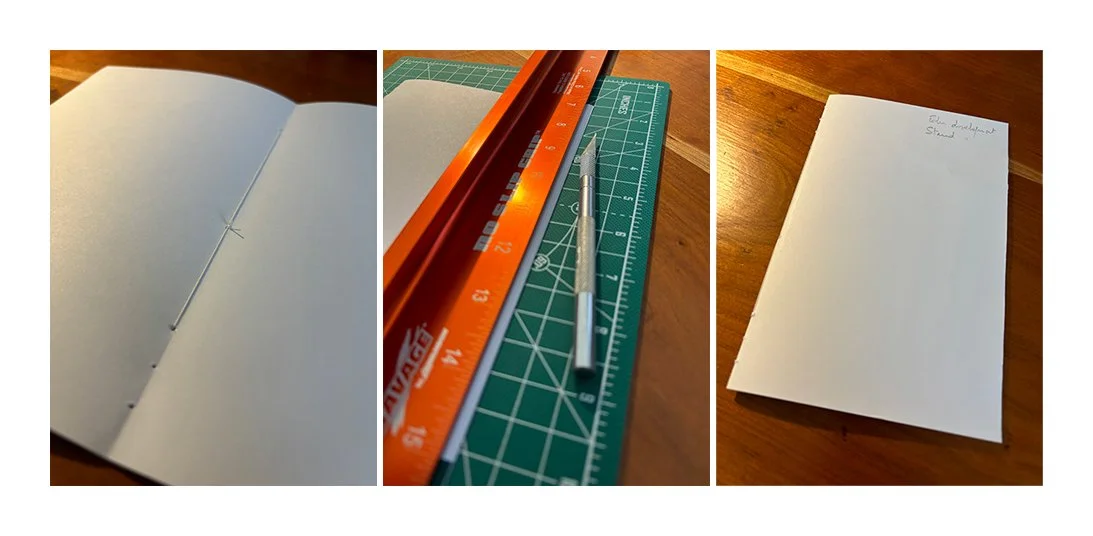Organizing Ideas
Keeping track of creativity’s expression
Some days, ideas can flow like the water of a mountain creek, so fast that keeping up can be a challenge, at the very least, for me. Some other days, ideas trickle like a creek of Texas in the middle of Summer. Managing ideas is very important as they are the expression of creativity. This page provides the rationale and the details of the workflow that I built up as I experimented over time.
Experiments failed (as expected). Recognizing and understanding the failures led to the current structure I am using. Keep on reading to find out more.
The strange realm of ideas
From curiosity and imagination rise ideas. Images, drawings, paintings, devices, woodworking, electronics, applications, typefaces… Why limit ourselves? Why jailing our minds in silos? Letting ideas flow is the best thing that can happen.
Ideas can be beautiful, strange, weird, sometimes ugly. But we all know it, ideas can be elusive, prone to vanish in the ether of our minds, blown in the wind of our distractions. Memorizing them can be a challenge. Recording ideas is key, whether in written, audio or video form Whatever works for you. But better yet is to organize them in way they can be easily retrieved, explored and developed.
To me, so far, only handwriting ideas works. As the ink and graphite hit the paper, a conversation starts, questions are asked, the path of the understanding of the idea can be explored.
Developing and executing ideas
In the past, I used a notebook to write thoughts about ideas. I’d use a few pages to record thoughts on one idea, the next few pages for another idea before having to write down more thoughts about the first one. A notebook was then a collection of unorganized thoughts. It was very hard to go back to ideas, to keep thoughts flowing naturally. And a natural, unobstructed flow is another very important fact for me.
Adam Savage, in his quest to keep his workshop organized, uses the principle of “first order of retrievability”: if a tool, needed for a project, is not directly accessible, it won’t be used and therefore is in the way of making progress.
The same applies to developing ideas. Using a notebook per idea seems like a good approach. Like tools are organized in drawers and toolboxes, ideas must be kept organized, each in their own notebook.
However, there is another consideration. How to choose the notebook so that there is just the right use of paper? Some ideas are developed over a dozen of pages while others require perhaps hundred pages and more of diagrams, research and thoughts. Using commercial notebooks just doesn’t work for me: the thought of using a 40 page notebook potentially for just a few pages is a roadblock (that is a quirk of my mind). Additionally, most notebooks are either ugly and unattractive (think of the typical composition book) and/or expensive. There is of course a better way. And it involves a little bit of effort.
Grab a needle and some thread
Why not make our own notebooks? The size, the number of pages, the choice of paper, etc is now possible. All we need to do is to stitch pages together. Making notebooks of 20 pages, of copy paper seems like a good choice: the paper is inexpensive and won’t be torn easily by the thread. There’s cheaper paper of course, like newsprint, but it’s really not suitable.
A large project will need multiple small notebooks which could then be stitched together to make one book for the project. It is then important to use a template for the holes.
Stitching pages into a notebook can be very simple or fancy. Simplicity is key, so that the process of making a new notebook for a project does not stand in the way of the project itself.
My current approach is the three hole pamphlet binding for the notebook and 4 extra holes to stitch multiple notebooks together later, at project completion, so that to collect them in books, each with a table of contents.
Notebooks make up the
chapters of a creative life
My system to develop my ideas rely on a set of notebooks. One notebook is dedicated to listing ideas as they come, whenever lightning strikes. As I add ideas to the list, it gets messy and hard to understand. Lists of ideas have to be rewritten, cleaned up (as projects complete) and ideas resorted. The same notebook is used to understand relationships between ideas (e.g. the completion of a tool project comes before a project using the said tool) and how time affects their execution.
Project specific notebooks are created as needed. As explained above, multiple notebooks may be needed for one single project (especially larger projects). Once multiple projects are completed, the notebooks are stitched together (like signatures for a book). Each book can have a table of contents (i.e. the projects it contains). The books themselves are “volumes” of projects, and volumes can be searched so past projects can be used as reference and knowledge for new projects.

